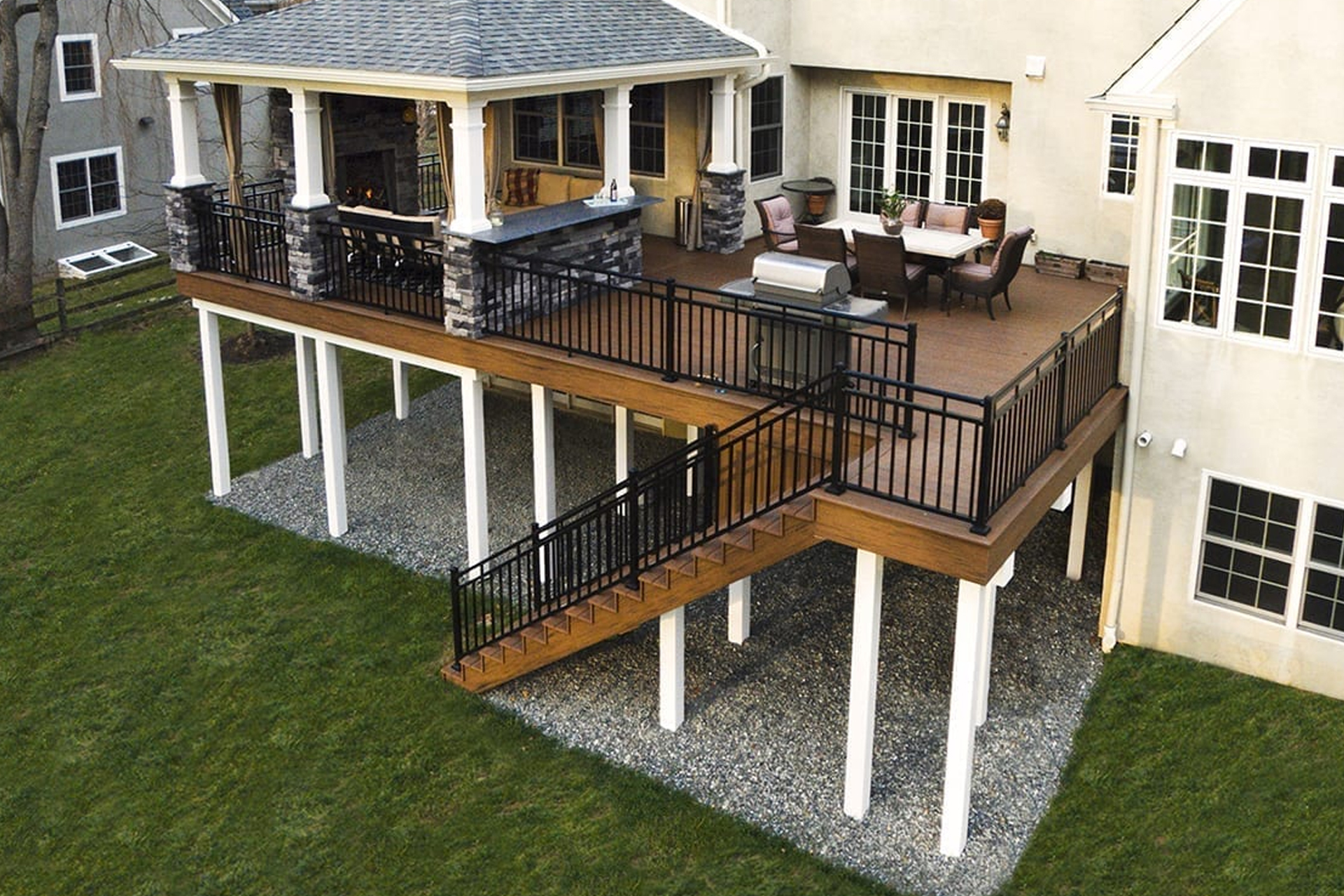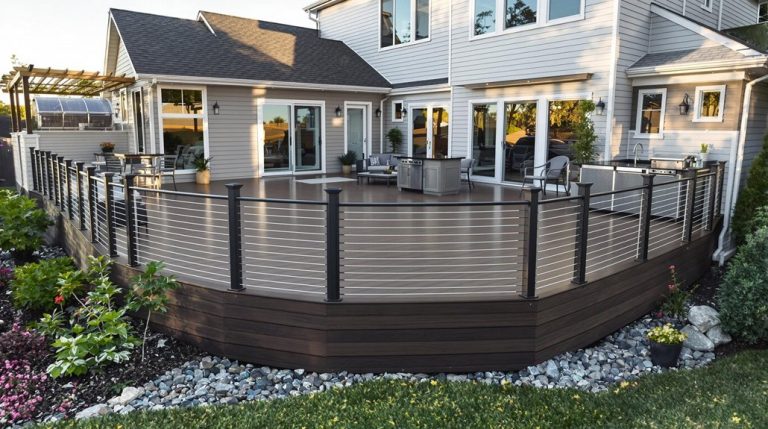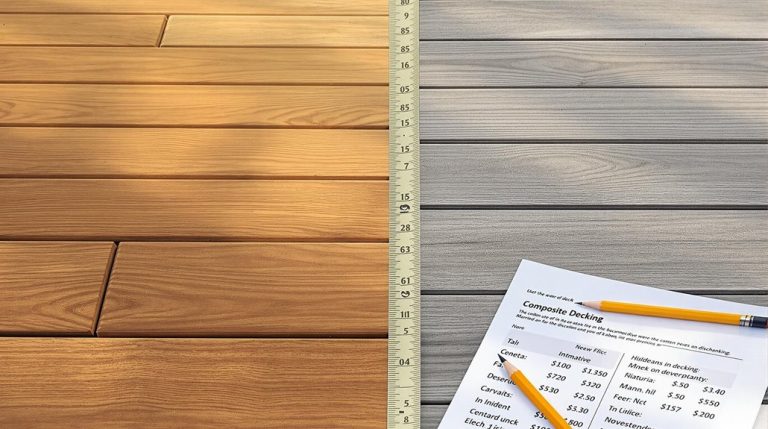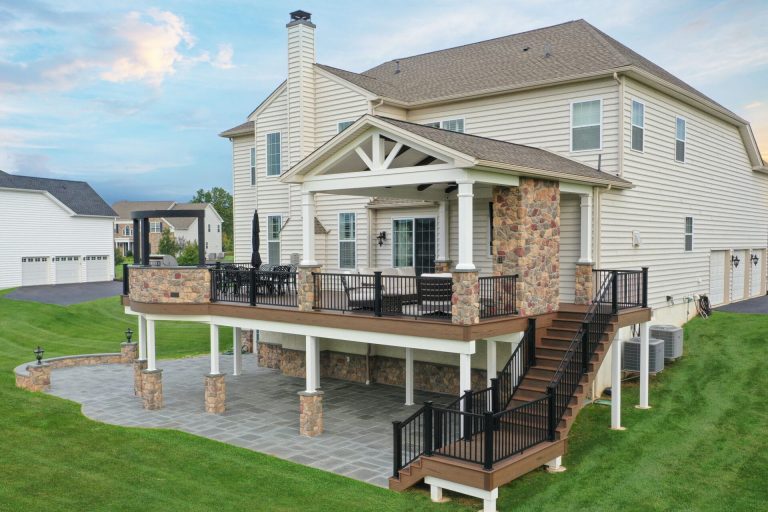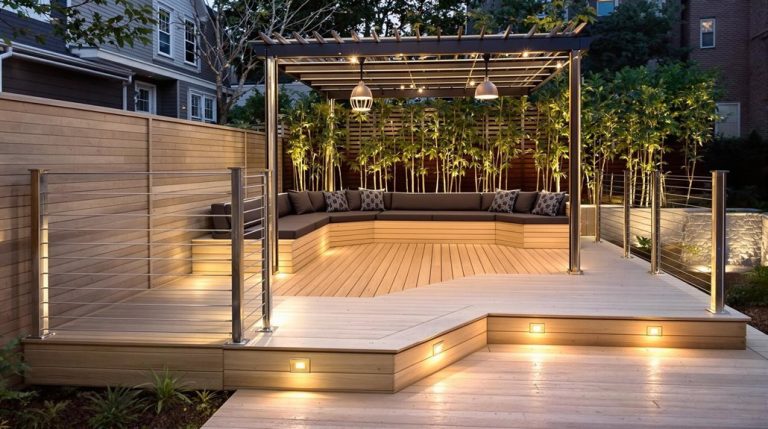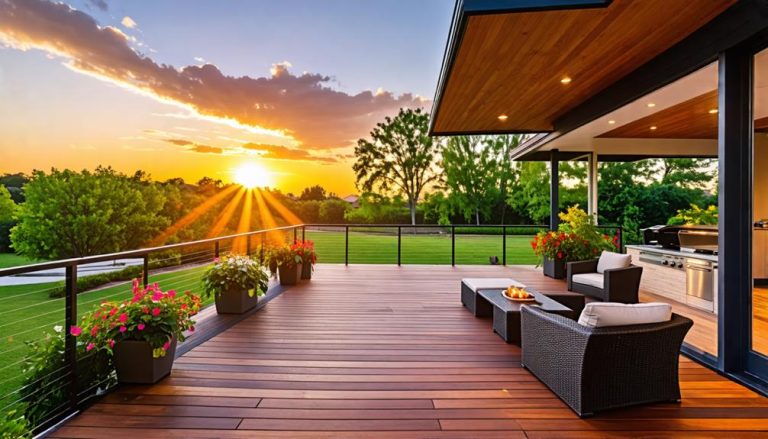Tips for Deck Design and Planning
7 Budget-Friendly Tips for Deck Design and Planning
To design a deck on a budget, first prioritize its functionality. Consider cost-effective materials like pressure-treated wood or composites. Weigh the pros and cons of DIY versus hiring professionals and plan during the off-season to snag materials on sale. Recycle existing materials whenever possible for a unique touch. Opt for minimalist design elements, functional furniture, and low-maintenance plants. Regular maintenance is key–apply quality sealant, inspect for damage, and clean often. With these tips, you’ll cleverly cut costs without sacrificing style or longevity. Want to make your pocket and future deck happy? Dive deeper into these strategies!
Prioritize Your Decks Functionality
Before anything else, you must first zero in on your deck’s functionality, ensuring it adequately serves your specific needs and lifestyle. A deck is not just a structure for aesthetics, it’s an extension of your living space. It’s where you’ll host summer barbecues, relax with a good book, or watch your children play.
Start by asking yourself, what activities will you predominantly use the deck for? Is it dining, relaxing, entertaining, or a combination? Your answers will help shape the deck’s design. For instance, if regular dining is on the agenda, you’ll need ample space for a table and chairs, with easy access to the kitchen. If it’s relaxation you’re after, a secluded corner deck with built-in seating and planters may be ideal.
Consider the number of people who will regularly use the deck. You wouldn’t want a large family or social circle crammed on a tiny deck. Factor in furniture and foot traffic, too. Remember, you’re creating an outdoor haven that’s uniquely yours. Make it functional, personal, and inviting. Prioritizing your deck’s functionality is a surefire way to ensure it’s used and loved for years to come.

Consider Low-Cost Materials
Once you’ve determined the functionality of your deck, it’s time to delve into the realm of material selection. Opting for low-cost materials can significantly reduce your overall expenses without compromising on quality or aesthetics. The trick lies in choosing wisely and being aware of the pros and cons of each option.
For instance, pressure-treated wood is a popular budget-friendly choice. It’s durable, easy to work with, and requires minimal maintenance. It’s also resistant to rot and insects, making it a practical option for outdoor use. However, it might not offer the same visual appeal as pricier options like cedar or redwood.
Composite materials, made from a blend of wood and plastic, are another cost-effective choice that offers a balance between aesthetics and affordability. They’re available in a variety of colors and textures that mimic the look of real wood, adding a touch of elegance to your deck. Plus, they’re resistant to rot, splintering, and fading.
DIY Vs Hiring Professionals
A crucial decision you’ll confront in your deck-building journey is whether to roll up your sleeves for a DIY project or to hire professionals to handle the task. Both paths have their merits and drawbacks, and your choice will hinge on several factors including your budget, skill level, time availability, and personal preferences.
Opting for a DIY project can save you money, giving you a sense of accomplishment and the freedom to work at your own pace. However, it demands a considerable amount of time, effort, and patience. It also requires a certain level of expertise to ensure that the deck is safe, sturdy, and aesthetically pleasing.
Hiring professionals, on the other hand, may require a larger budget, but it alleviates the stress and labor involved in building a deck. Professionals possess the know-how to foresee potential problems and troubleshoot them effectively. They’re skilled in ensuring your deck meets local building codes and standards, and they can get the job done quickly and efficiently.
In the end, the choice between DIY and hiring professionals isn’t just about cost—it’s about what works best for you. Weigh your options carefully to make a decision that fits your needs, goals, and lifestyle.
Plan Deck Design in Off-Season
Regardless of whether you choose to tackle the project yourself or hire professionals, planning your deck design during the off-season can offer several advantages. First off, you’re likely to have more time to plan and design your project when you’re not battling other summer activities. This gives you the opportunity to research, brainstorm, and create a detailed plan that reflects your vision without feeling rushed.
Moreover, many home improvement stores offer off-season sales which can significantly reduce the cost of materials. By planning ahead, you can buy what you need when prices are at their lowest and store them until you’re ready to build.
Another advantage to off-season planning is that you’ll likely have your pick of contractors if you decide to hire professionals. During peak season, the best contractors are often booked solid. In the off-season, they’re more likely to be available and may even offer discounted rates.
Reuse and Recycle Existing Materials
Don’t toss out those old deck boards or outdoor furniture just yet! With a little creativity, you can repurpose these items into unique, budget-friendly additions to your new deck design. Recycling and reusing materials isn’t just good for your wallet—it’s also a sustainable choice that reduces waste.
Repurposing Old Deck Boards
Harnessing the charm of old deck boards, you can easily transform your outdoor space while maintaining a tight budget. Instead of tossing them out, consider sanding down and re-staining these pieces to give them a new lease on life. You’ll be amazed at how a simple makeover can bring out their hidden beauty.
Use these refreshed boards to create a unique, rustic pathway through your garden or to build an eclectic, low-cost planter box. Repurposing old deck boards not only saves you money but also contributes to sustainable living by reducing waste. This approach ensures you’re part of a community committed to preserving our environment. So, roll up your sleeves and let’s begin this creative, budget-friendly journey together.
Recycling Outdoor Furniture
Often, you’ll find that existing outdoor furniture can be given a new life through creative recycling, turning what might seem like waste into a stylish and functional addition to your deck. This not only adds a unique touch to your space but also contributes to sustainability.
Consider the following table that outlines some inventive ways to re-purpose your old pieces:
| Old Furniture | Creative Reuse | Added Benefit |
|---|---|---|
| Aged Wood Bench | Plant Holder | Adds greenery |
| Old Chairs | Swing seats | Fun element |
| Worn-out Table | Mosaic Art Piece | Visual interest |
| Broken Lounger | Garden Sculpture | Conversation starter |
| Old Umbrella Stand | Bird Feeder | Attracts wildlife |
Opt for Simple Design Elements
Incorporate simple design elements into your deck layout to maximize style while minimizing expenditure. When it comes to decking, less is often more. A minimalist design doesn’t have to mean plain or boring; it’s about making smart, budget-friendly choices that create a welcoming, stylish space.
Consider using one or two colors for your deck. This not only saves money on paint or stain but also gives your deck a cohesive, well-designed look. Opt for functional furniture that doubles up as storage, reducing clutter and the need for additional pieces.
Invest in simple lighting, such as string lights or solar lanterns, to create a warm, appealing ambiance without breaking the bank. You can also use plants as a budget-friendly way to add color, texture, and privacy to your deck. Choose hardy, low-maintenance species that’ll thrive in your specific climate.
Regular Maintenance to Save Costs
While it’s crucial to design your deck with budget-friendly strategies in mind, don’t overlook the importance of regular maintenance to save costs in the long run. You’re not just creating a space to relax and entertain; you’re investing in your home’s value.
Regular maintenance is a proactive way to prolong your deck’s lifespan, thereby reducing the need for costly repairs or replacements. Start by keeping your deck clean. Sweep away leaves, dirt, and debris that could stain the surface or cause water damage.
Invest in a high-quality sealant to protect the deck from the elements. You’ll be surprised how much damage sun, rain, and snow can cause over time. An annual sealant application can protect your deck and keep it looking fresh.
Inspect your deck regularly for signs of wear and tear. Loose boards, corroded hardware, or cracks can quickly turn into major issues if left unchecked. By addressing these problems early, you’re saving yourself from larger, more expensive fixes down the line.
In essence, regular maintenance isn’t just about keeping your deck beautiful—it’s about preserving your investment, ensuring safety, and fostering a sense of pride in your outdoor space.

